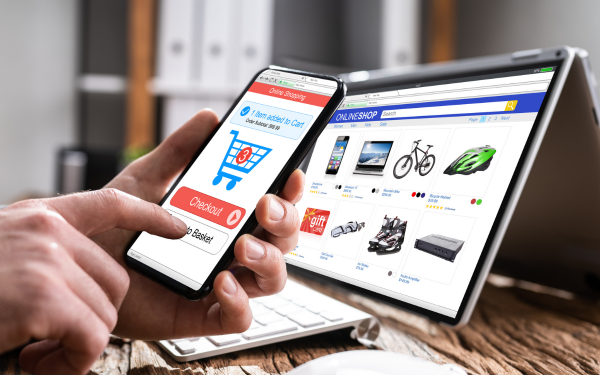When major retail brands first started to catch on to the opportunities of ecommerce in the late 1990s and early 2000s, the new digital realm was treated as an entirely distinct and separate market.
It would not be uncommon for retailers to have an ecommerce team that operated in near isolation from their usual retail operations team. Merchandising and logistics were run in parallel for online and off. Processing and recording transactions in store and online happened via two completely different systems, a physical POS and a digital commerce platform.
Over time, this level of separation has become less and less desirable. For one, businesses have come to realise that operational silos of any kind tend to lead to inconsistency, inefficiency, duplication and error.
Perhaps even more importantly, it has become increasingly apparent over time that consumers don’t see any benefit in the separation of retail channels. What they want more than anything is consistency and convenience, however and wherever they choose to shop.
Figures from IBM demonstrate how important it is for consumers to be able to switch from online to off and back again, at different stages of the journey. While 75% of shoppers now say they tend to ‘discover’ products online, 65% then like to head into a store to ‘try before they buy.’
60% of consumers say they prefer to shop with retailers that have both a physical store and an online presence. 64% also say they want to see retailers innovate more in how they use technology, wherever they happen to be shopping.
The challenge for retailers is how to meet these demands by creating engaging, seamless, digitally enhanced experiences that remove the old hard lines between online and off.
Shared experience
Shared commerce is a term used to describe the modern practice of using a single IT platform to run all your sales and operations. Whether a transaction is completed in store or online, it all gets logged in the same database. Inventory and merchandising all comes from the same place, logistics and replenishment for stores are integrated with fulfilment for online orders.
This helps retailers keep track of the whole business much more easily, as everything is processed in the same place. But the shared commerce concept can also serve as a prompt for delivering more innovative shopping experiences, by ‘sharing’ the opportunities created by digital technology in store and online.
Integration of POS and ecommerce systems is the starting point. For one, it creates opportunities for much more flexible or ‘blended’ shopping experiences. Click and collect purchasing, also known as ‘BOPIS’ (buy online, pick up in store), has quadrupled in value over the past decade. It’s an option that depends fundamentally on in store and online systems working in perfect alignment.
It’s often said that one of the reasons ecommerce has become so successful is because it puts consumers in control. When shopping online, they have the freedom to look up whatever product information they want at their leisure, browse and compare, even complete purchases. Not everyone wants or needs attention from sales staff. Especially when ‘service’ is associated with the hard sell.
In self-service kiosks, retailers now have the tools to replicate this kind of independence in store. And kiosks of course have other strengths, like reducing wait times at tills and increasing throughput.
Another benefit the virtual realm of ecommerce has over bricks and mortar retail is your merchandising isn’t restricted by physical space. You can make as many products as you like available online. But thanks to technology, you can do the same now in store, too. Again, kiosks act as great information points where customers have the freedom to browse your online catalogue. Or other retailers deploy smart screens to create an ‘infinite aisle’, extending the products physically available on the shelves with a virtual display.
Again, all of this comes back to connecting those once very distinct areas of operation, in store retail and your ecommerce systems. By sharing the same fulfilment, purchasing, product catalogue and inventory management systems, plus plenty more besides, between your digital commerce and POS, you increase your ability to deliver the kind of enhanced experiences customers love in store and out.




